The wait for UC Berkeley’s bold new home for research and innovation is nearly over.
After two years of construction, the Bakar BioEnginuity Hub (BBH) is scheduled to open in February 2022. The world-class facility pairs the Bakar Labs incubator with fellowships and programming for Berkeley students and researchers, equipping current and aspiring entrepreneurs in the STEM world with labs, offices, equipment and shared community spaces that aim to encourage collaboration.
And all of this is just steps away from campus.
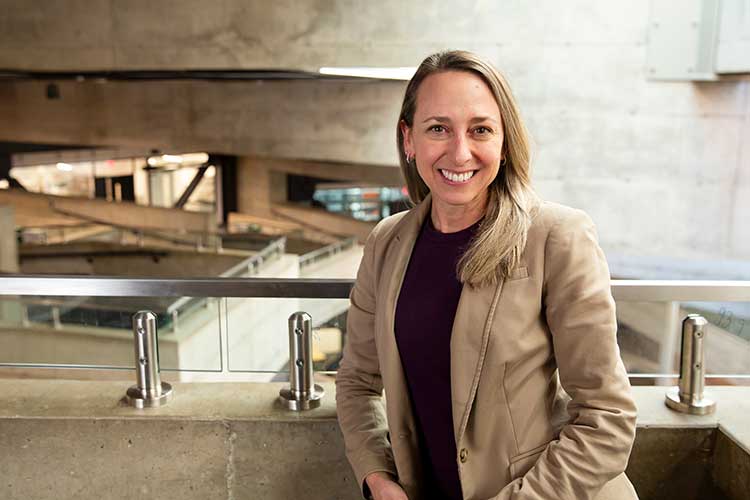
Located in Woo Hon Fai Hall — the former Berkeley Art Museum between Bancroft Way and Durant Avenue — the four-story building project is currently in the final stages of construction. But some Bakar Labs startup tenants have already moved into the building, aiming to find solutions to global challenges like the climate change crisis, food insecurity and disease prevention.
For Berkeley bioengineering professor and BBH executive director Amy Herr, the completion of the facility is “a dream come true.”
“It is overwhelming that we’re not just looking at a blueprint of a reinvigorated campus landmark,” Herr said, while standing on the building’s outdoor terrace. “We’re actually inside of a state-of-the-art incubator.”
Herr said the space is designed for research that tackles problems at the interface of the life sciences and the physical sciences — like biology and engineering: And that’s “bioenginuity.”
“There’s a lot of pride and anticipation for the future,” she said. “We want to provide agency and access to people who are committed to solving these big societal problems. And that requires a world-class infrastructure to get it done.”
Berkeley News toured the building to get a firsthand look at its unique architectural design. We also sat down with new BBH tenants and leaders in the STEM and entrepreneurship space to talk about how the facility will contribute to innovation and change-making at Berkeley.
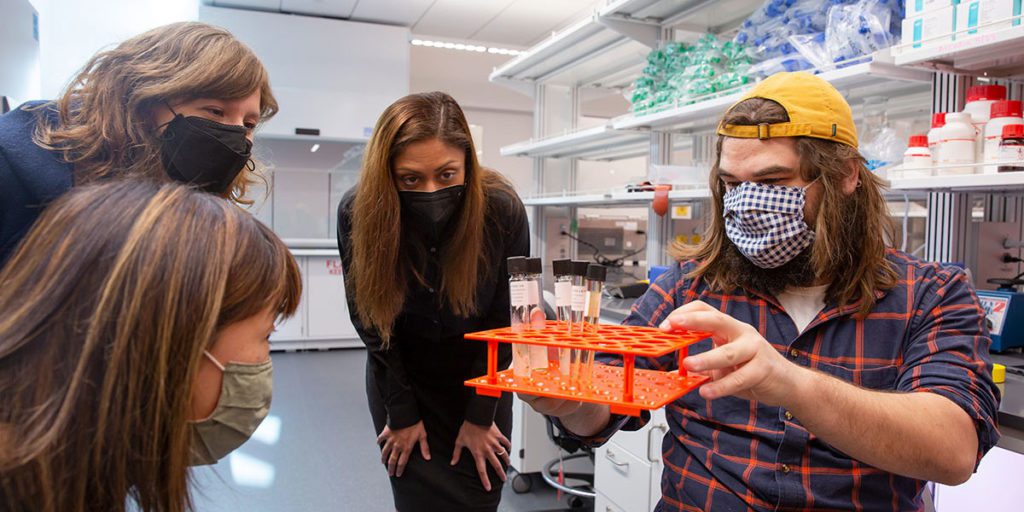
A space to spark innovation
Originally designed by Mario Ciampi, the cast concrete structure at 2630 Bancroft Way was built in 1970 in the Brutalist architecture style, with wings that fan out from its center. It was home to the Berkeley Art Museum until 2014; it also housed the Pacific Film Archive (PFA) beginning in 1971 and the PFA’s library and film study center in 1972.
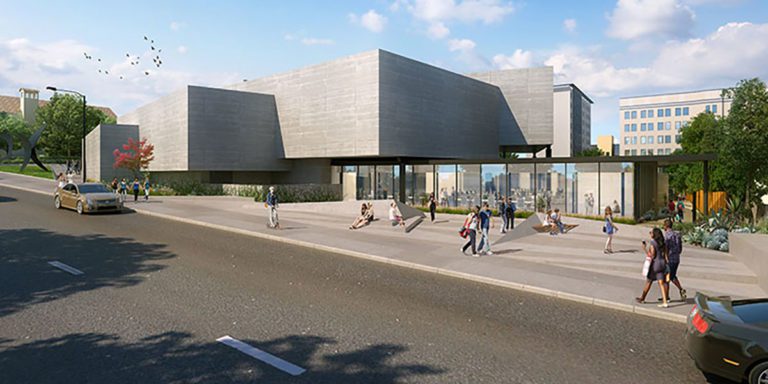
In 2012, the building was declared a City of Berkeley landmark, and it was listed on the National Register of Historic Places in 2013.
Kevin Koblik, a Berkeley alumnus, knows the 94,000 square-foot hall well. He recalls being a student and drawing up a mock renovation plan for the lobby and entrance over 15 years ago. Now, as a senior associate for MBH Architects, Koblik manages the current renovation for BBH, a project that has become nostalgic for him.
“I’ve always felt this building was phenomenal,” said Koblik who graduated from Berkeley’s architecture program in 2006. “There are a number of important Brutalist buildings in the world, but this one is different in that the flow of the interior space is so unique. The irregular geometry and varied levels create moments of compression and release throughout, with something new to discover around every corner.”
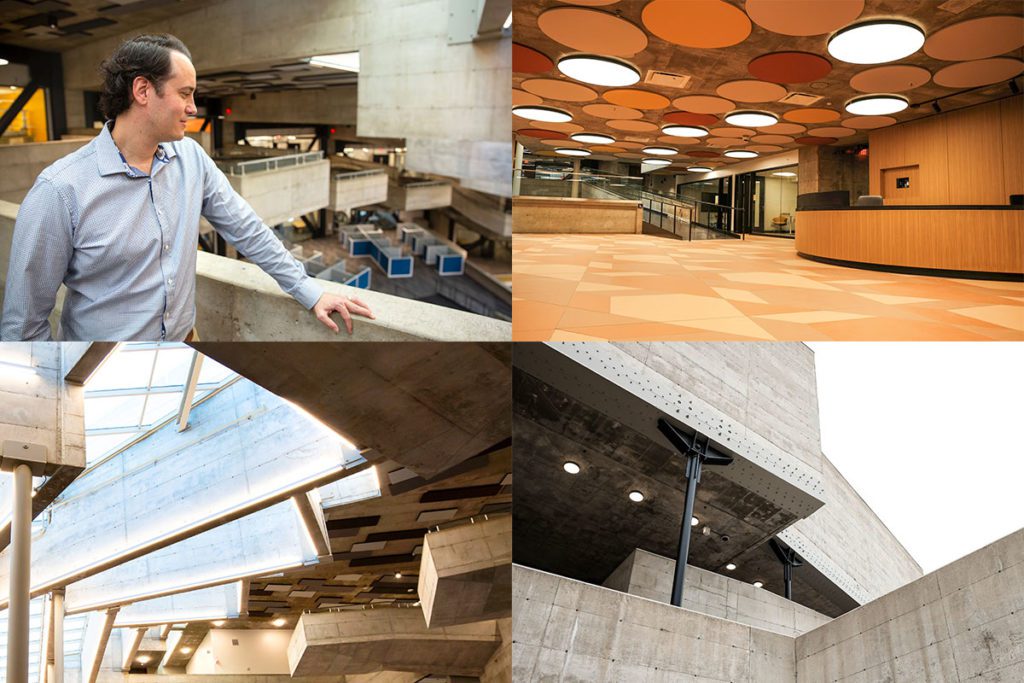
To further preserve the design of the building, all of the historically important spaces were documented by the firm Page & Turnbull and considered while reimagining the space. Chief among these was the central heart of the building, the dramatic, skylit gallery space.
All of the building systems needed to be upgraded said Koblik, and black steel brace frames were installed throughout the building to ensure safety in the event of an earthquake.
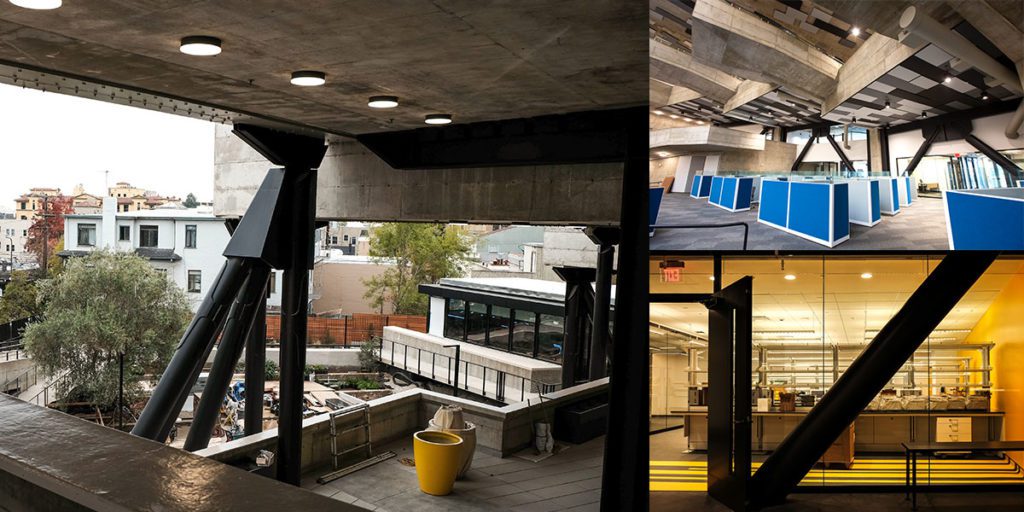
The structural retrofit was headed by a team of Berkeley alumni from Forell/Elsesser Engineers, Inc. Braces were installed directly outside of the labs to maintain the indoor balcony space that previously was used for art exhibits. These balconies will be used as shared hot, or flexible, desk spaces for people to collaborate. “The project was programmed with the goal of creating an environment that sparks new ideas,” said Koblik.
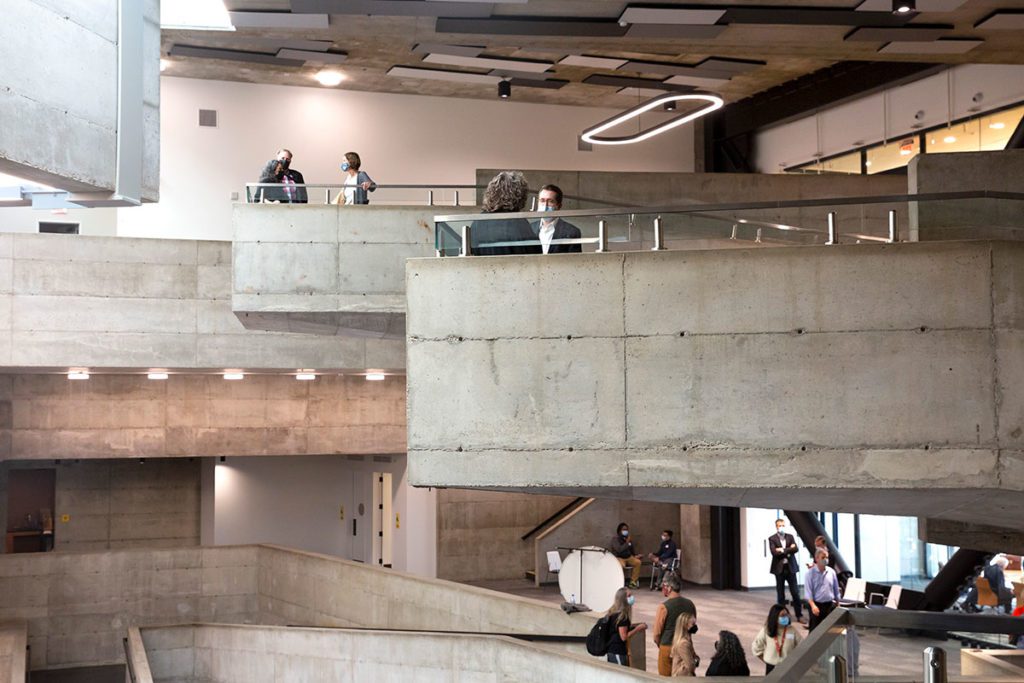
The design of the building’s retrofit began in 2016. Construction began in late 2019 and continued, despite the COVID-19 pandemic. Occupancy of the building began in October, and a grand opening is scheduled for February 2022.
All components of the building are electric, said Koblik, allowing BBH to reduce its operational carbon footprint to zero by 2045.
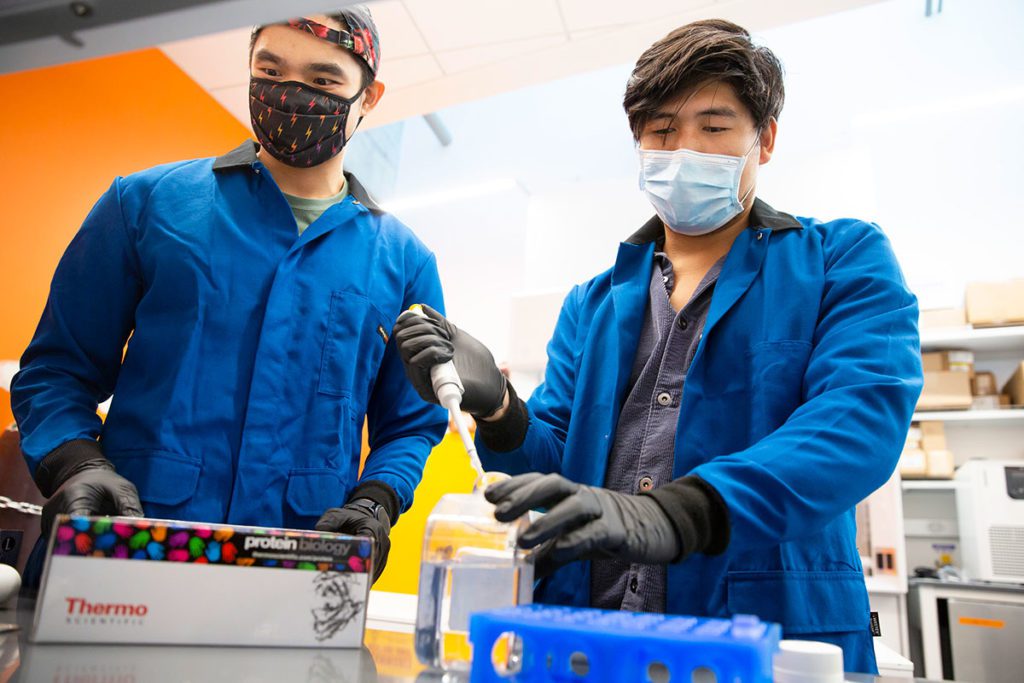
‘Democratizing the pursuit of science’
Within the Bakar BioEnginuity Hub is Bakar Labs, an incubator and lab space created in collaboration between UC Berkeley and QB3, a University of California-wide institute that supports entrepreneurship and UC research programs. Six startups have already moved into the space, which has the capacity to support more than 50 companies.
Tenants have over 14,000 square feet of lab space. Open labs are located at each of the five tiers of the building and range from 454 to 1,112 square feet, with every other tier containing private labs that range from 144 to 329 square feet. Natural lighting is created through skylights located at the back of each lab space.
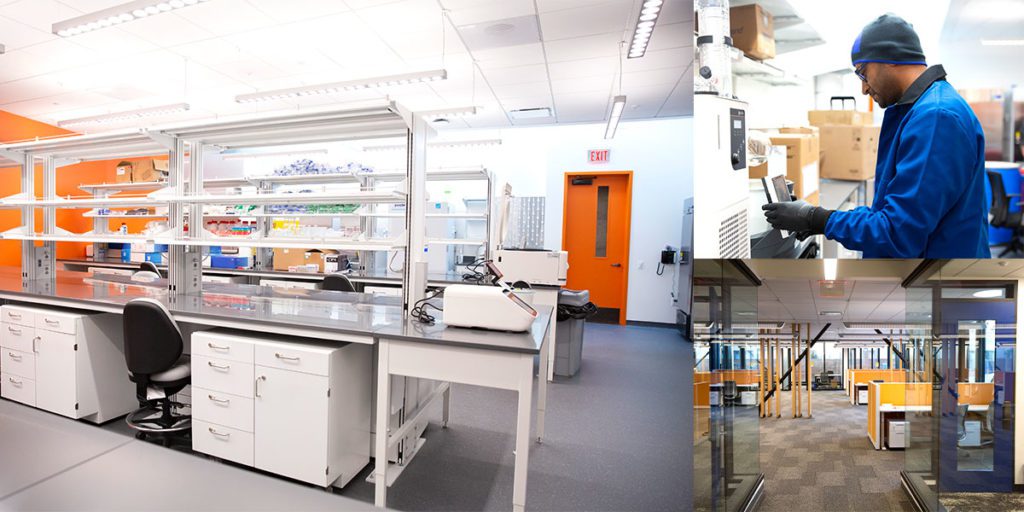
Bakar Labs’ incubator is designed to empower early-stage startups that can lease as little as a single lab bench or half of a freezer shelf. This flexibility enables qualified companies to launch with modest funding.
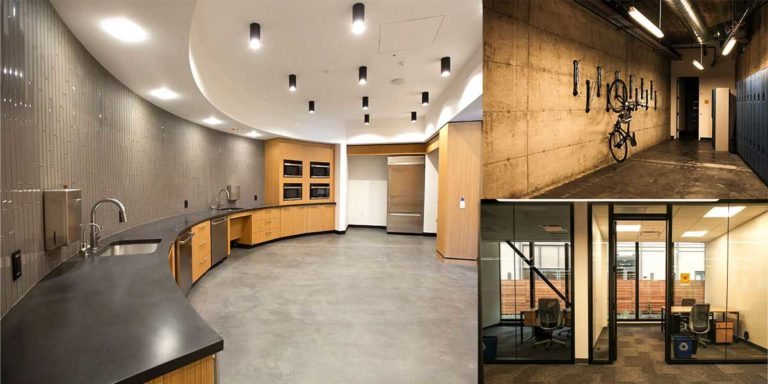
The open labs are considered co-working spaces where tenants can share resources and work in collaboration if desired. As the companies grow, more benches or dedicated private labs can be leased.
This resource structure goes a long way toward “democratizing who gets to pursue science,” said Koblik.
“We always intended Bakar Labs to have a ‘double bottom line,’ a responsibility to select and support startups that have a strong chance of market success and are developing solutions to make the world a better place,” said Regis Kelly, director of Bakar Labs and QB3 executive director. “It is a pleasure to meet the first entrepreneurs to move in and learn that, indeed, they fit the bill.”
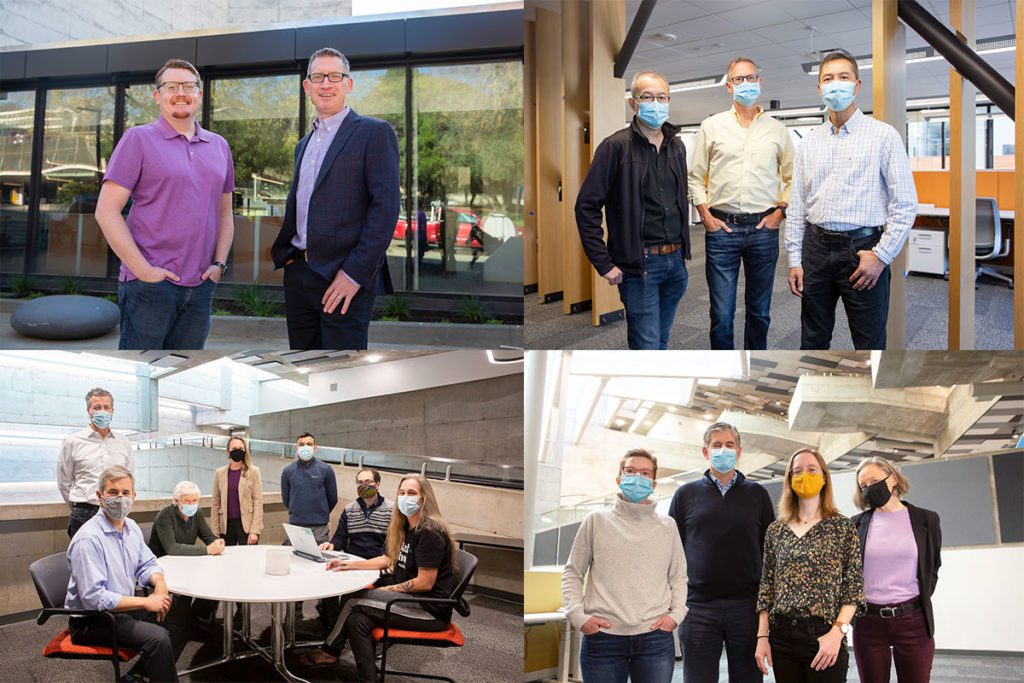
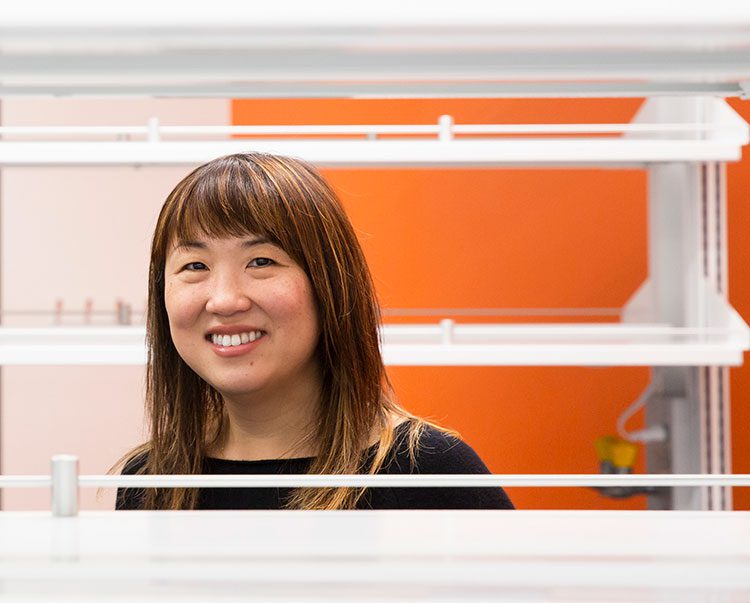
Seemay Chou, an assistant professor at UCSF, and her tech company, Arcadia Science, aims to share discovery-based research across diverse organisms to understand the world around us.
At BBH, Chou hopes to work in shared spaces with other startups. The building’s collaborative and artistic environment can help in immeasurable ways, she said.
“The physical space you work in can really affect how you’re thinking about big-picture solutions,” said Chou. “We’re trying to establish a company that disrupts the way things are normally done. We want to accompany that with a physical setting that also feels different. Not a standard company, not a standard academic institute. Something entirely different.”
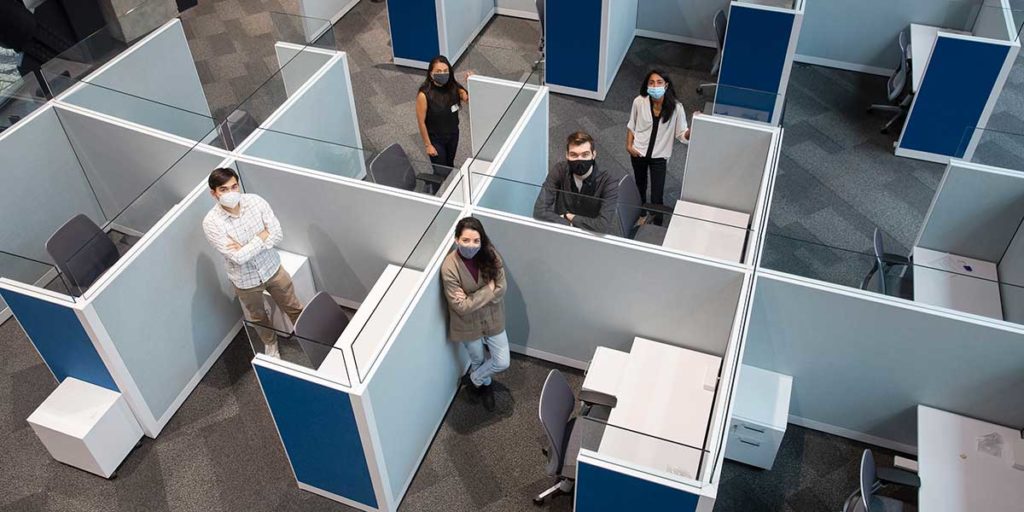
A Berkeley connection
While startup tenants at BBH will come from different parts of the country and world, many of them were connected to the Bakar Labs incubator through Berkeley’s campus community.
Riya Muckom graduated from Berkeley in 2018 with a Ph.D. in chemical and biomolecular engineering. As a former postdoctoral researcher in Berkeley’s Schaffer research group, last year Muckom co-founded Axent Biosciences, a biotech startup that uses cell therapies to treat disorders in the central nervous system. Muckom said being so connected to Berkeley is a valuable resource for them.
“There’s world-class faculty that we can bring in as scientific experts and quality students that we can recruit,” said Muckom. “It’s kind of like an all-in-one ecosystem. So, it’s really nice to be so close to the university.”
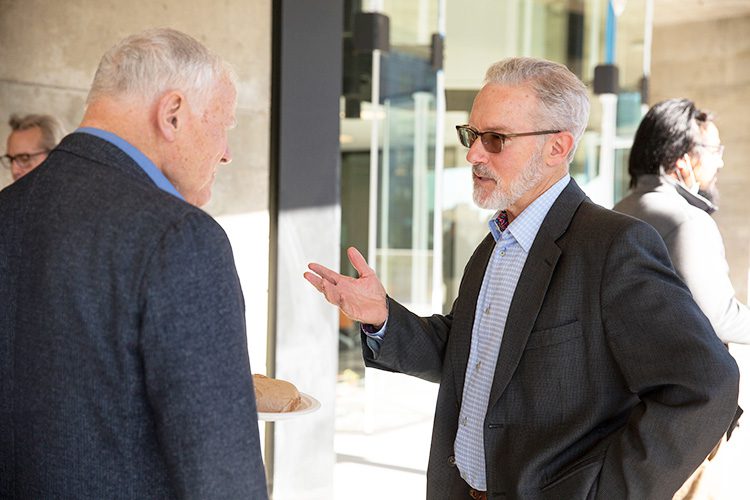
What makes the new campus building so unique is the convergence of science-based academics, research, entrepreneurship and “the remarkable space itself,” Berkeley Chief Innovation and Entrepreneurship Officer Rich Lyons said.
“The Bakar BioEnginuity Hub advances our Berkeley Changemaker initiative in several ways,” said Lyons. “It creates an incomparable frame for doing translational science that changes people’s lives. And it sets the sights of our students — both undergraduate and graduate — even higher, in terms of the impact that they can have in the world.”
The building will support campus-facing elements like graduate fellowships, interdisciplinary meetings for faculty and an internship program in collaboration with QB3, said Herr. A 2,500- square-foot flexible space called the Studio will host teams-in-residence.
Herr said they will welcome student teams from across campus who are coming out of capstone courses or research collaborations to house their prototypes, hold meetings, network and build a community.
“What is the value of sitting down next to someone?” said Herr. “You lean over and kind of just ask, ‘How’s it going?’ And all of a sudden, you’re sharing resources with each other. … It’s these kinds of stochastic interactions that open up professional networks and spark new ideas.”
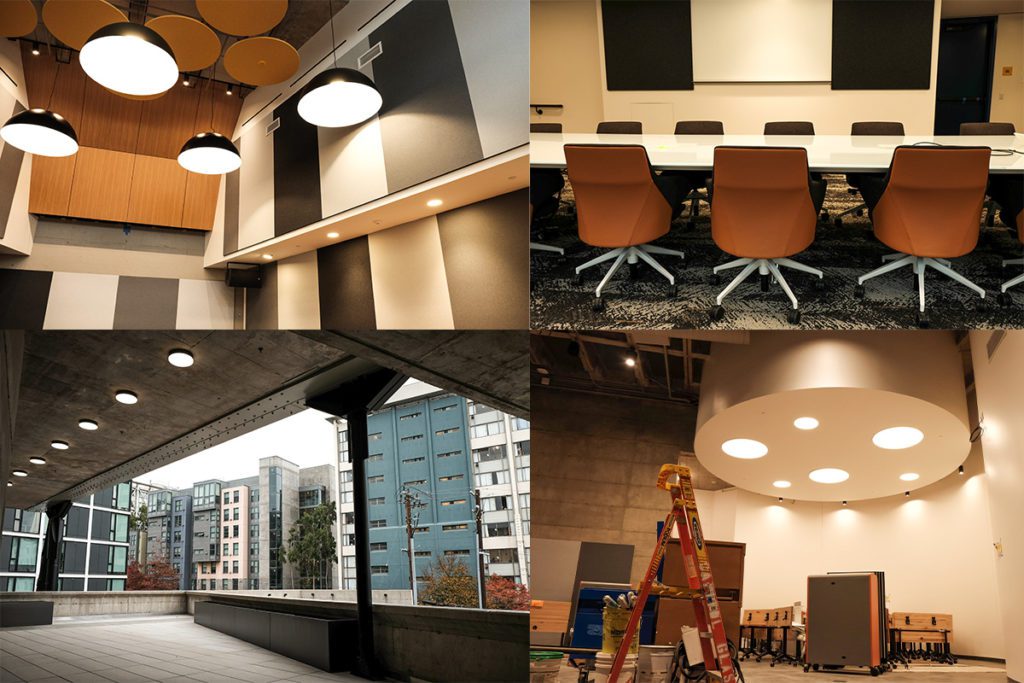
Top left: auditorium space that will be used for BBH events and community gatherings; top right: shared conference room near the outdoor terrace; bottom left: outdoor community space overlooking residential buildings nearby; bottom right: shared desk and lab space in the Studio, which is still under construction. (UC Berkeley photos by Sofia Liashcheva)
Berkeley alumnus and East Bay native Ismael Montanez said he remembers attending events at the Berkeley Art Museum as a child with his family and is nostalgic about the memories he has had in the building and what it used to be.
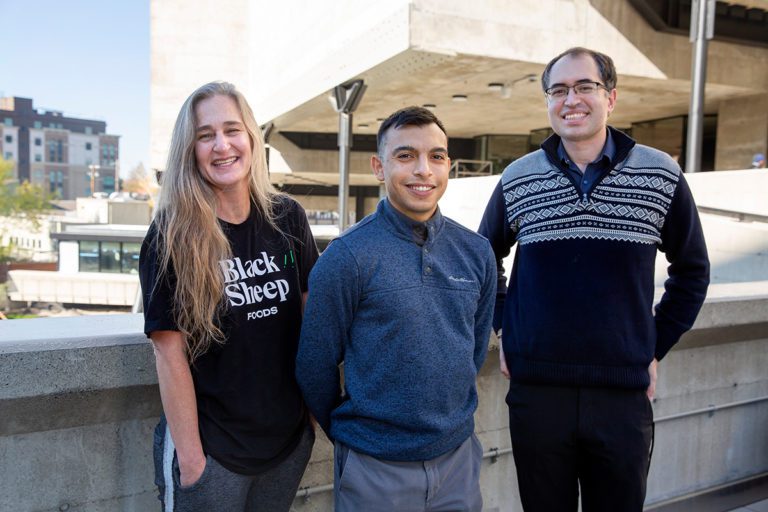
Montanez, though, will be a Bakar Labs tenant at BBH in January. His company, Black Sheep Foods, hopes to reduce the destructive environmental impact of industrial meat production through its sustainable, plant-based meat products.
The collaborative environment that BBH brings through its architecture, amenities and shared spaces is powerful, he said.
“I’ve worked in research labs here at UC Berkeley, so I have always been captivated by seeing this space moving toward the future,” said Montanez. “I do miss what it used to be, I can’t deny that. But I appreciate where it’s going.”
This story was reposted from Berkeley News. Read more here.